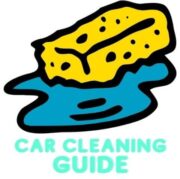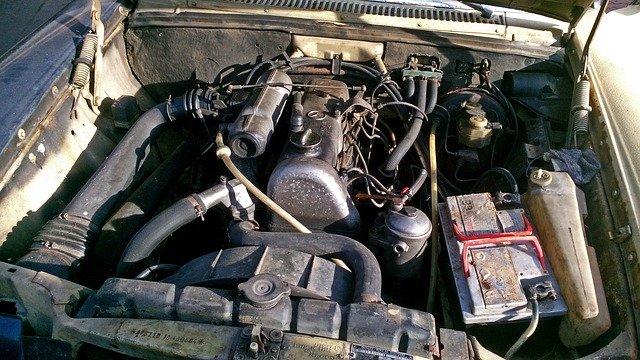Last Updated on January 29, 2024 by Chase Manhattan
Car battery corrosion is a common issue that can cause your vehicle to malfunction or even fail to start. Corrosion occurs when the sulfuric acid in the battery reacts with the lead terminals and produces lead sulfate, which can build up and cause a layer of corrosion to form. It’s important to clean the corrosion off your car battery as soon as possible to prevent further damage and ensure that your vehicle runs smoothly.
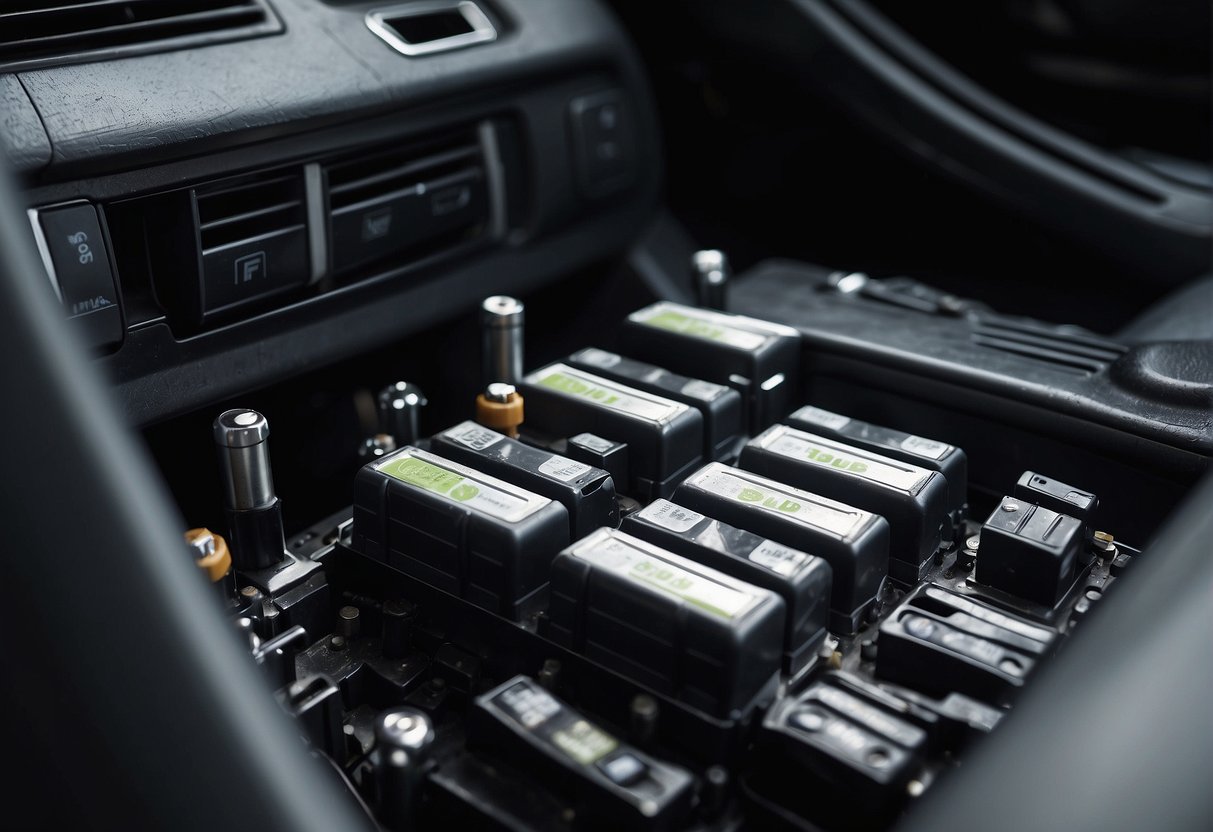
When cleaning car battery corrosion, safety should be your top priority. Always wear gloves and eye protection to protect yourself from the acid in the battery. Additionally, make sure that the car is turned off and the key is removed from the ignition before you begin cleaning the battery.
There are several methods that you can use to clean car battery corrosion, including using baking soda and water, a battery cleaner brush tool, or white vinegar or lemon juice. Each method has its own pros and cons, so it’s important to choose the one that works best for you. With the right tools and techniques, you can easily clean your car battery and ensure that your vehicle runs smoothly.
Quick Navigation
Understanding Car Battery Corrosion
As a car owner, it is important to understand the basics of car battery corrosion. Corrosion is a common problem that can occur in any car battery, regardless of the make or model. In this section, I will discuss the causes of corrosion, the types of corrosion, and the effects of corrosion on car performance.
Causes of Corrosion
Corrosion occurs when the sulfuric acid in the battery reacts with the lead in the battery terminals, producing lead sulfate. This reaction can be accelerated by overcharging or undercharging the battery, which causes the battery to produce hydrogen gas. The hydrogen gas can then react with the sulfuric acid to produce sulfur dioxide, which can lead to corrosion.
Types of Corrosion
There are two main types of corrosion that can occur in a car battery: external and internal. External corrosion occurs on the battery terminals, while internal corrosion occurs inside the battery itself. External corrosion is usually caused by exposure to the elements, such as rain or snow, while internal corrosion is usually caused by overcharging or undercharging the battery.
Effects on Car Performance
Corrosion can have a significant impact on the performance of a car. If the corrosion is severe enough, it can cause the battery to fail, which can leave the car unable to start. In addition, corrosion can reduce the efficiency of the battery, which can lead to decreased fuel economy and reduced power output.
To prevent corrosion, it is important to keep the battery terminals clean and free of debris. Regularly cleaning the terminals with a wire brush and a solution of baking soda and water can help to prevent corrosion. It is also important to ensure that the battery is properly charged and that the alternator is functioning properly. If you notice any signs of corrosion or battery failure, it is important to have the battery inspected by a qualified mechanic as soon as possible.
Safety Precautions
Car battery corrosion can be a hazardous substance to handle, and it is important to take the necessary safety precautions before attempting to clean it. Here are some safety measures that you should follow:
Personal Protective Equipment
When handling car battery corrosion, it is important to wear the appropriate personal protective equipment (PPE). This includes gloves, safety glasses, and protective clothing. You should always wear gloves when handling battery corrosion to prevent any direct contact with the skin. Rubber gloves are recommended as they provide additional protection against corrosive substances.
Safety glasses are also essential to protect your eyes from any splashes or spills. Eye protection is especially important when cleaning the battery terminals as it can cause the acid to splash. Protective clothing such as a lab coat or apron can also help prevent any direct contact with the skin.
Handling Corrosive Substances
Car battery corrosion is a corrosive substance that can cause skin irritation and chemical burns. Therefore, it is important to handle it with care. Before cleaning the battery terminals, make sure the area around the battery is well ventilated. This will help to reduce the risk of inhaling any fumes that may be released during the cleaning process.
To clean the battery terminals, you can use a mixture of baking soda and water or white vinegar. These substances can help neutralize the acid and make it easier to clean. However, it is important to avoid using any abrasive materials such as wire brushes or steel wool as they can damage the battery terminals.
In conclusion, when cleaning car battery corrosion, it is important to take the necessary safety precautions to prevent any harm to yourself or others. By wearing the appropriate PPE and handling corrosive substances with care, you can ensure a safe and effective cleaning process.
Initial Cleaning Steps
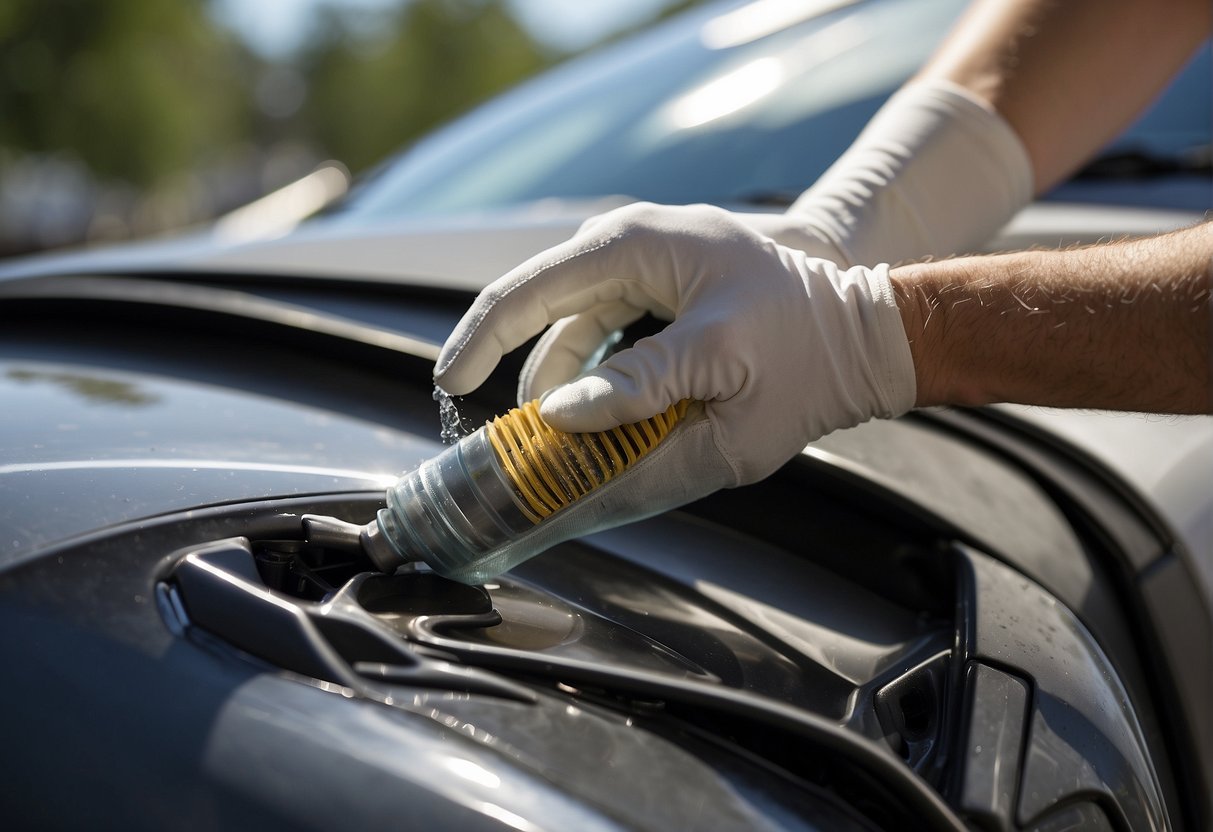
As a car owner, it is important to regularly check and clean your car battery to prevent corrosion buildup. Corrosion buildup on your battery terminals can cause electrical problems and even prevent your car from starting. In this section, I will provide you with the initial cleaning steps to take before proceeding with the actual cleaning process.
Removing Battery Cables
The first step in cleaning your car battery is to remove the battery cables. This is done to ensure that there is no electrical current flowing through the battery while you are cleaning it. Before removing the cables, it is important to use a memory saver to prevent the loss of any important settings such as radio presets, clock settings, anti-theft, keyless entry systems, cell phone settings, and other functions.
To remove the battery cables, start with the negative cable first, followed by the positive cable. Use a wrench or pliers to loosen the nuts on the battery terminals, and gently wiggle the cables until they come off. Be careful not to touch the metal parts of the cables together, as this can cause a spark.
Assessing the Corrosion Level
After removing the battery cables, it is important to assess the level of corrosion on the battery terminals. Corrosion can appear as a white or green powdery substance on the battery posts and cables. If the corrosion is light, you can clean it using a wire brush and a mixture of baking soda and water.
However, if the corrosion is heavy and has caused damage to the battery terminals, it may be necessary to replace the battery. It is important to note that attempting to clean heavily corroded terminals can cause further damage and may even lead to electrical problems.
In summary, the initial cleaning steps for cleaning car battery corrosion include removing the battery cables and assessing the level of corrosion on the battery terminals. By taking these steps, you can ensure that your battery is safe to clean and prevent further damage to your car’s electrical system.
Corrosion Removal Techniques

As a car owner, I know how frustrating it can be to deal with corroded car battery terminals. Corrosion can cause a lot of problems such as poor performance, electrical issues, and even permanent damage to the battery. Fortunately, there are several effective techniques for removing corrosion from car battery terminals. In this section, I will discuss some of the most popular methods.
Using Baking Soda Solution
One of the most common and effective ways to remove corrosion from car battery terminals is by using a baking soda solution. To make the solution, mix a tablespoon of baking soda with a cup of water. Dip a toothbrush or a stainless steel wire brush into the solution and scrub the terminals gently. Rinse the terminals with water and dry them with a clean cloth. Baking soda is a mild abrasive that can remove corrosion without damaging the terminals.
Alternative Cleaning Solutions
If you don’t have baking soda, there are other cleaning solutions that you can use to remove corrosion from car battery terminals. For example, you can use white vinegar or lemon juice to neutralize the acid and dissolve the corrosion. Simply dip a toothbrush or a stainless steel wire brush into the solution and scrub the terminals gently. Rinse the terminals with water and dry them with a clean cloth. You can also use cola to remove corrosion. The phosphoric acid in cola can dissolve the corrosion. However, be careful not to spill the cola on your car’s paint as it can damage the paint.
Mechanical Removal Methods
If the corrosion is too stubborn to be removed by cleaning solutions, you can use mechanical removal methods such as sandpaper or a corrosion cleaner. Sandpaper can be used to sand away the corrosion, but be careful not to sand away too much of the metal. Corrosion cleaner is a more aggressive option that can dissolve the corrosion quickly. However, be careful not to get the cleaner on your skin or clothes as it can cause burns.
In conclusion, removing corrosion from car battery terminals is an important maintenance task that can extend the life of your battery. By using the techniques discussed in this section, you can remove corrosion safely and effectively.
Neutralizing Battery Acid
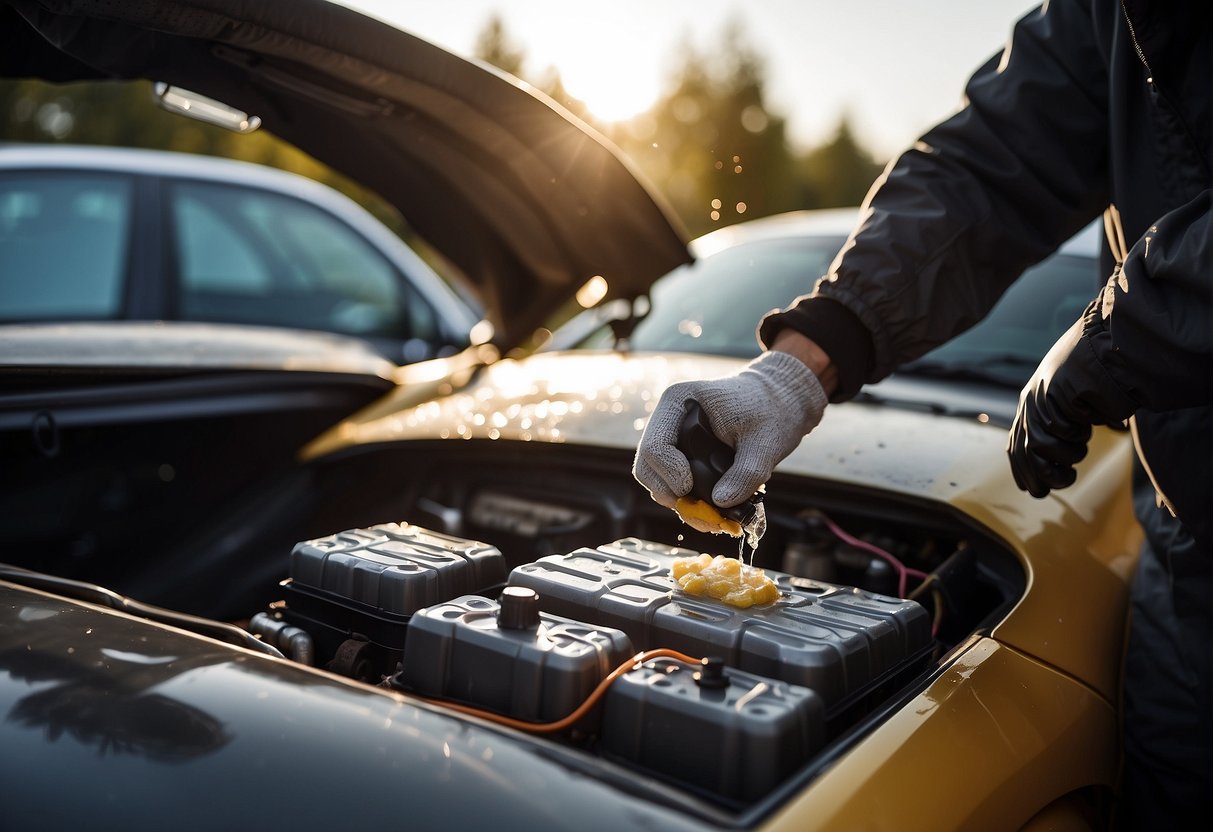
When it comes to cleaning car battery corrosion, it is important to neutralize any battery acid that may have leaked. Battery acid is highly corrosive and can cause damage to the battery and surrounding areas if left unchecked. In this section, I will discuss how to neutralize battery acid safely and effectively.
Using Alkaline Substances
One of the most common ways to neutralize battery acid is by using alkaline substances such as baking soda. Baking soda is a mild alkaline substance that can help neutralize the acid and prevent further damage. To use baking soda, you will need to make a solution by mixing it with water. Here are the steps to follow:
- Put on gloves and safety goggles to protect yourself from the acid.
- Remove the battery from the vehicle and place it on a clean, flat surface.
- Mix one tablespoon of baking soda with one cup of water to create a solution.
- Pour the solution over the corroded areas of the battery.
- Allow the solution to sit for a few minutes to neutralize the acid.
- Use a brush or toothbrush to scrub the corroded areas of the battery.
- Rinse the battery with distilled water to remove any remaining baking soda solution.
It is important to note that you should never use tap water to rinse the battery as it contains minerals that can cause further damage. Always use distilled water to rinse the battery.
In addition to baking soda, there are other alkaline substances that can be used to neutralize battery acid. For example, lemon juice and vinegar are both acidic substances that can neutralize battery acid. However, they are not as effective as baking soda and may not be suitable for all types of batteries.
In conclusion, neutralizing battery acid is an important step in cleaning car battery corrosion. By using alkaline substances such as baking soda, you can safely and effectively neutralize the acid and prevent further damage to your battery and surrounding areas.
Post-Cleaning Maintenance
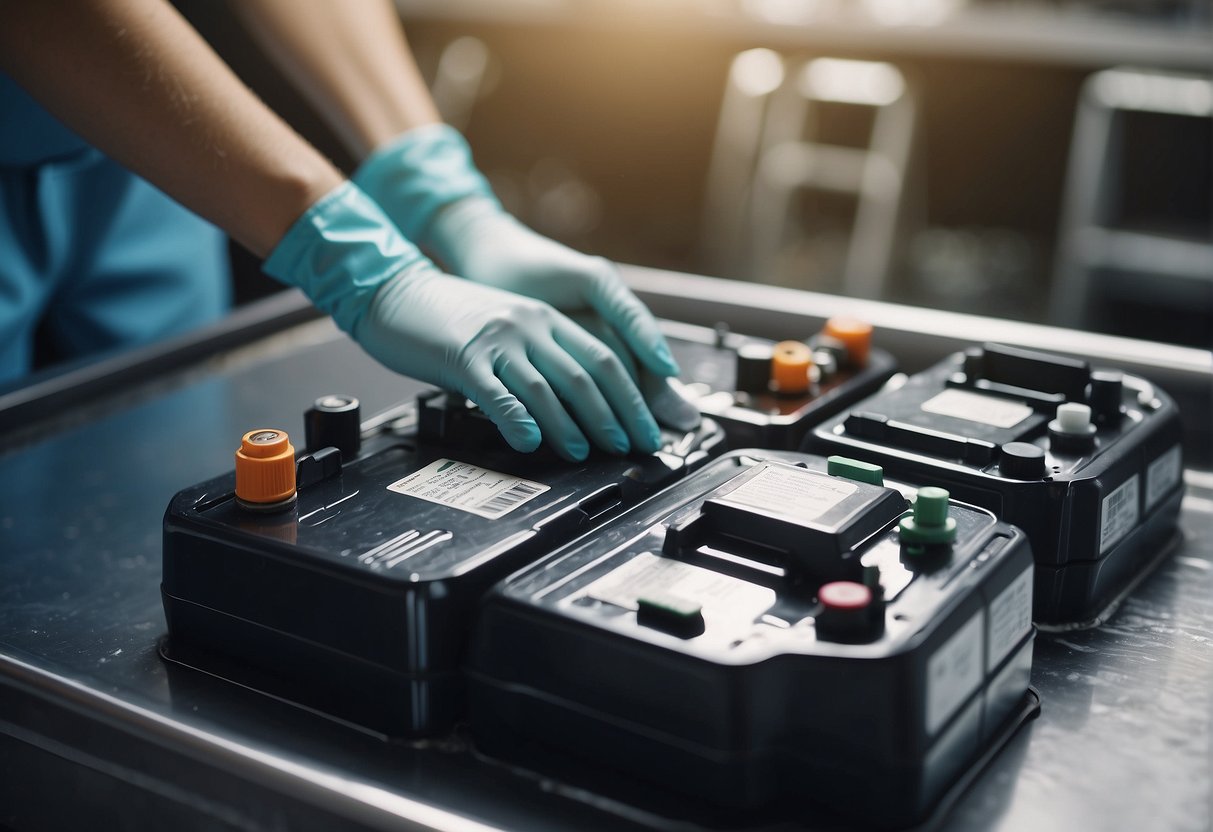
After successfully cleaning the car battery corrosion, there are a few important steps to take to ensure the battery stays in good condition. Here are some post-cleaning maintenance steps to follow:
Drying and Reconnecting
Before reconnecting the battery, it is essential to ensure that all the components are dry. Use a clean towel or cloth to wipe off any moisture from the battery and its terminals. Once the battery is completely dry, reconnect the cables to their respective terminals. Make sure the connections are tight and secure to prevent any future corrosion.
Applying Protective Coatings
To prevent future corrosion, applying a protective coating to the battery terminals is a good idea. Petroleum jelly, battery grease, and dielectric grease are some of the options available in the market. These coatings help prevent moisture and contaminants from reaching the terminals, reducing the chances of corrosion.
Battery terminal protector is another protective coating that can be used. It forms a barrier between the terminal and the environment, preventing corrosion for up to a year. It is important to note that these coatings should be applied sparingly and only to the battery terminals.
Regular Inspection and Maintenance
Routine maintenance is crucial to ensure the longevity of the battery. Regularly inspect the battery and its terminals for any signs of corrosion or damage. If any corrosion is detected, clean it immediately to prevent it from spreading.
Additionally, the charging system should be checked regularly to ensure that the battery is charging properly. A faulty charging system can cause the battery to overcharge or undercharge, leading to premature failure.
By following these post-cleaning maintenance steps, you can ensure that your car battery stays in good condition and provides reliable performance.
Preventative Measures
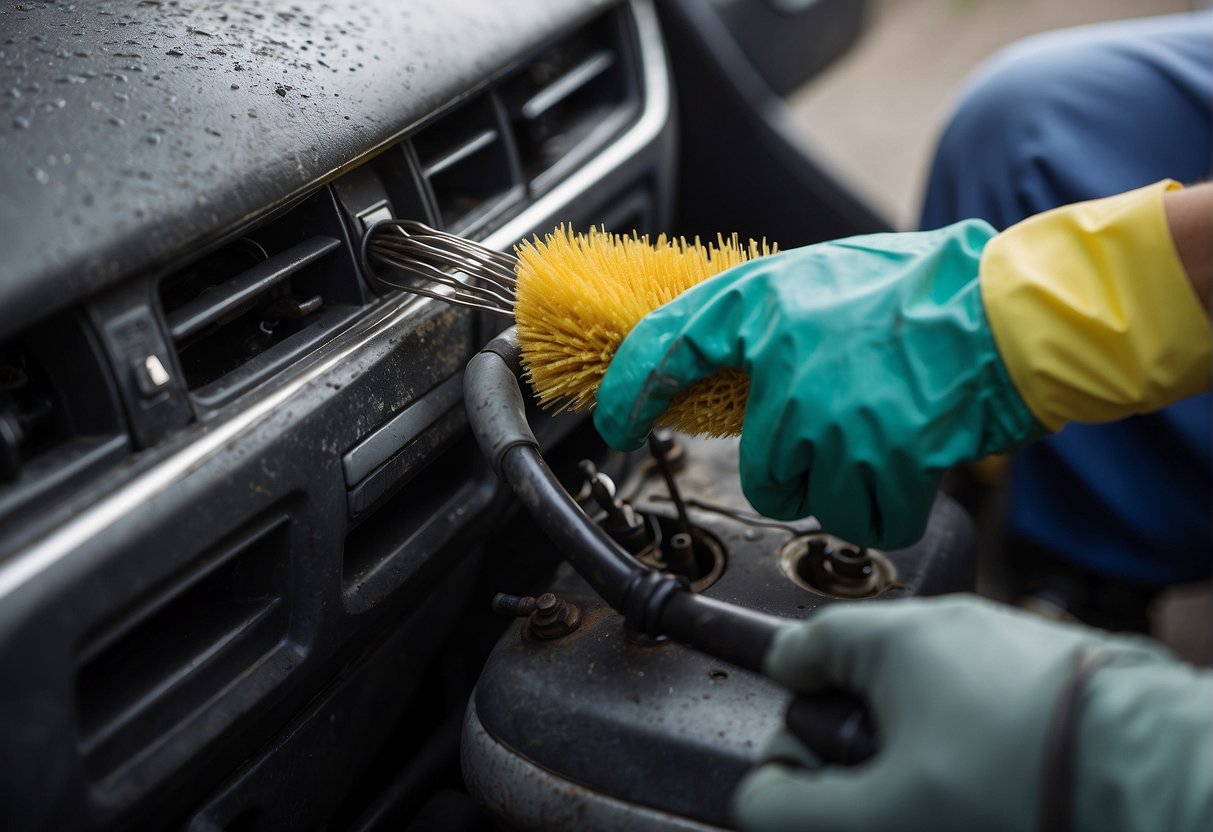
As a car owner, it’s important to take preventative measures to keep your car battery in good condition and avoid corrosion. Here are some things that I do to prevent battery corrosion:
Proper Charging Practices
Overcharging or undercharging your car battery can lead to corrosion and a shorter lifespan. To prevent this, I make sure to follow the recommended charging guidelines for my specific battery. This information can usually be found in the owner’s manual or on the battery itself. I also avoid leaving my car battery connected to a charger for too long.
Regular Battery Checks
Regularly checking your car battery can help you catch any potential issues before they become bigger problems. I check my battery’s fluid levels regularly and make sure that the battery is not leaking any fluid. If I notice any issues, I take my car to a mechanic for further testing.
Battery Terminal Protection
The battery terminals are a common area for corrosion to occur. To prevent this, I make sure that the battery compartment is clean and dry. I also check the vent caps on my battery to make sure that they are functioning properly. If I notice any corrosion on the terminals, I use a mixture of baking soda and water to clean them.
By following these preventative measures, I have been able to keep my car battery in good condition and avoid corrosion. Regular maintenance and checks can go a long way in prolonging the life of your car battery.
Troubleshooting Electrical Issues
As a car owner, it is important to know how to troubleshoot electrical issues that may arise from a corroded battery terminal. Here are some steps to take:
Identifying and Resolving Short Circuits
Short circuits can occur when the electrical current takes a shortcut and bypasses the intended path, causing damage to the electrical components. Signs of a short circuit include blown fuses, a battery that drains quickly, and electrical components that don’t work properly. To identify a short circuit, I would use a multimeter to test the electrical components and wiring for continuity. If a short circuit is detected, I would replace the damaged components and repair any damaged wiring.
Replacing Damaged Components
If the electrical issue is not caused by a short circuit, it may be due to corroded battery terminals. Corroded battery terminals can cause electrical problems such as difficulty starting the engine or flickering headlights. To fix this issue, I would first disconnect the battery cables and then use a wire brush to clean the corroded terminals. If the terminals are too corroded to be cleaned, I would replace them with new terminals.
It is important to note that when replacing battery terminals, it is necessary to ensure that the new terminals are compatible with the battery’s voltage and amperage. Using incompatible terminals can cause damage to the electrical components and may lead to further electrical issues.
By following these steps, I can troubleshoot and fix electrical issues caused by corroded battery terminals.
Professional Assistance
If you are experiencing heavy corrosion on your car battery or are unsure of how to clean it properly, it may be time to seek professional assistance. In this section, I will discuss when to seek help and how to find qualified services.
When to Seek Help
If you are not confident in your ability to clean your car battery safely and effectively, it is best to seek professional assistance. This is especially true if you notice heavy corrosion on your battery terminals. Heavy corrosion can be difficult to remove and may require special tools and techniques.
Additionally, if you notice any damage to your battery or are experiencing other issues with your car’s electrical system, it is important to seek professional help. Attempting to fix these issues yourself can be dangerous and may cause further damage to your car.
Finding Qualified Services
When looking for professional assistance with your car battery, it is important to find a qualified service provider. One option is to contact the Universal Technical Institute, which offers automotive training programs and may be able to recommend a qualified service provider in your area.
You can also search for local auto repair shops or battery specialists. Be sure to read reviews and ask for recommendations from friends and family to ensure that you find a reputable service provider.
Overall, seeking professional assistance can be a wise choice if you are unsure of how to clean your car battery or are experiencing heavy corrosion. By finding a qualified service provider, you can ensure that your car’s electrical system is functioning properly and avoid any potential safety hazards.
Frequently Asked Questions
What household items can I use to clean car battery corrosion effectively?
You can use household items such as baking soda, vinegar, and water to clean car battery corrosion effectively. These items are readily available and inexpensive. However, it is important to follow the correct steps to ensure that you clean the battery safely and effectively.
Is it safe to clean battery terminals without disconnecting them from the vehicle?
It is not safe to clean battery terminals without disconnecting them from the vehicle. When you clean the battery terminals, you are dealing with electrical current. If you do not disconnect the battery terminals, you risk shorting out the electrical system of the vehicle and causing damage to the vehicle.
What are the steps to remove corrosion from car battery terminals using baking soda?
To remove corrosion from car battery terminals using baking soda, you will need to mix a tablespoon of baking soda with a quart of water. You can then pour the mixture over the battery terminals and use a brush to scrub the corrosion away. After scrubbing, you can rinse the battery with clean water and dry it with a clean cloth.
Can using WD-40 help in cleaning car battery corrosion, and how should it be applied?
Yes, WD-40 can help in cleaning car battery corrosion. You can apply WD-40 to the battery terminals and use a wire brush to scrub the corrosion away. After scrubbing, you can rinse the battery with clean water and dry it with a clean cloth.
Does the presence of corrosion on my car battery indicate that it needs to be replaced?
The presence of corrosion on your car battery does not necessarily indicate that it needs to be replaced. Corrosion is a natural occurrence that happens over time, and it can be cleaned off the battery terminals. However, if the battery is old or not holding a charge, it may need to be replaced.
How can I prevent car battery corrosion from happening in the first place?
You can prevent car battery corrosion from happening in the first place by keeping the battery clean and dry. You can also apply a thin layer of petroleum jelly to the battery terminals to prevent corrosion from forming. Additionally, you can ensure that the battery is properly secured in its tray to prevent movement and vibration.
